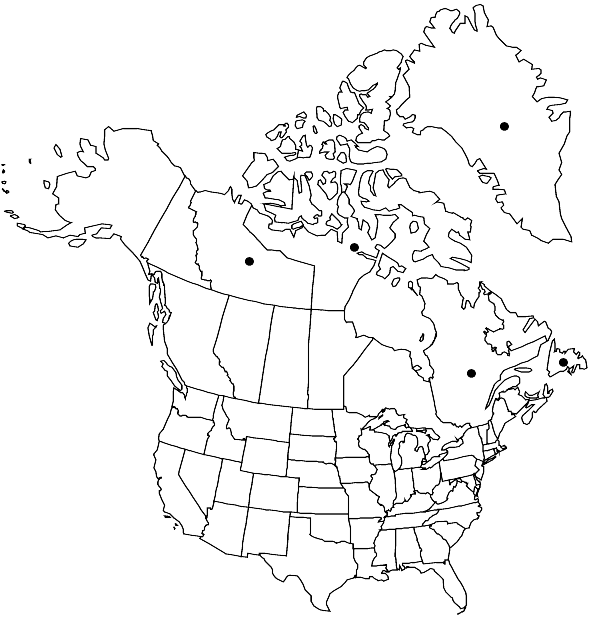Difference between pages "Thelypteris noveboracensis" and "Schistidium grandirete"
Bryophyt. Biblioth. 49: 50, fig. 7. 1996,.
FNA>Volume Importer |
FNA>Volume Importer |
||
| Line 1: | Line 1: | ||
{{Treatment/ID | {{Treatment/ID | ||
| − | |accepted_name= | + | |accepted_name=Schistidium grandirete |
| − | |accepted_authority= | + | |accepted_authority=H. H. Blom |
|publications={{Treatment/Publication | |publications={{Treatment/Publication | ||
| − | |title= | + | |title=Bryophyt. Biblioth. |
| − | |place= | + | |place=49: 50, fig. 7. 1996, |
| − | |||
}} | }} | ||
| − | + | |basionyms= | |
| − | |basionyms= | + | |synonyms= |
| − | + | |hierarchy=Grimmiaceae;Grimmiaceae subfam. Grimmioideae;Schistidium;Schistidium grandirete | |
| − | + | |hierarchy_nav=<div class="higher-taxa"><div class="higher-taxon"><small>family</small>[[Grimmiaceae]]</div><div class="higher-taxon"><small>subfamily</small>[[Grimmiaceae subfam. Grimmioideae]]</div><div class="higher-taxon"><small>genus</small>[[Schistidium]]</div><div class="higher-taxon"><small>species</small>[[Schistidium grandirete]]</div></div> | |
| − | + | |volume=Volume 27 | |
| − | |synonyms= | + | |mention_page=page 210, 219 |
| − | + | |treatment_page=page 218 | |
| − | |||
| − | |||
| − | |||
| − | |||
| − | |||
| − | |||
| − | |||
| − | |||
| − | |hierarchy= | ||
| − | |hierarchy_nav=<div class="higher-taxa"><div class="higher-taxon"><small>family</small>[[ | ||
| − | |volume=Volume | ||
| − | |mention_page= | ||
| − | |treatment_page= | ||
}}<!-- | }}<!-- | ||
| − | --><span class="statement" id="st-undefined" data-properties=""><b> | + | --><span class="statement" id="st-undefined" data-properties=""><b>Plants </b>in open, occasionally compact tufts, yellow-brown or dull red, often with yellowish or olivaceous tones. <b>Stems</b> 1.2–7 cm, central strand weak or absent. <b>Leaves</b> erect or slightly curved when dry, ovate-lanceolate, occasionally linear-lanceolate, keeled distally, 1.7–2.6 mm, 1-stratose; margins usually recurved to apex, smooth or weakly toothed, 2-stratose or 1-stratose in spots; apices acute; costa percurrent or short-excurrent as a smooth or weakly denticulate, occasionally decurrent awn, abaxial surface sometimes papillose; basal marginal cells short-rectangular or quadrate; distal cells mostly short-rectangular, 11–14 µm wide, strongly sinuose. <b>Sexual</b> condition autoicous. <b>Capsule</b> orange- or red-brown, short-cylindric or cupulate, 0.7–1.1 mm; exothecial cells usually isodiametric, quadrate or irregularly angular, usually mixed with a few elongate cells, thin-walled, trigonous; stomata present or absent; peristome patent to squarrose-recurved, often twisted, 330–530 µm, bright red, papillose, usually strongly perforated. <b>Spores</b> 15–21 µm, granulose or verruculose.</span><!-- |
-->{{Treatment/Body | -->{{Treatment/Body | ||
| − | |habitat= | + | |phenology=Capsules mature late spring to early summer. |
| − | |elevation= | + | |habitat=Rocks and on moist mineral soil |
| − | |distribution= | + | |elevation=low to moderate elevations (0-600 m) |
| + | |distribution=Greenland;Nfld. and Labr. (Nfld.);N.W.T.;Nunavut;Que.;Eurasia. | ||
| + | |discussion=<p><i>Schistidium grandirete</i> is an arctic species characterized by a distinctive orange-brown or dull red color and large laminal cells. Differences between <i>S. grandirete</i> and the similar arctic species 18. <i>S. holmenianum</i> are discussed thereunder.</p> | ||
|tables= | |tables= | ||
|references= | |references= | ||
| Line 42: | Line 30: | ||
-->{{#Taxon: | -->{{#Taxon: | ||
| − | name= | + | name=Schistidium grandirete |
|author= | |author= | ||
| − | |authority= | + | |authority=H. H. Blom |
|rank=species | |rank=species | ||
| − | |parent rank= | + | |parent rank=genus |
| − | |synonyms= | + | |synonyms= |
| − | |basionyms= | + | |basionyms= |
| − | |family= | + | |family=Grimmiaceae |
| − | |habitat= | + | |phenology=Capsules mature late spring to early summer. |
| − | |elevation= | + | |habitat=Rocks and on moist mineral soil |
| − | |distribution= | + | |elevation=low to moderate elevations (0-600 m) |
| + | |distribution=Greenland;Nfld. and Labr. (Nfld.);N.W.T.;Nunavut;Que.;Eurasia. | ||
|reference=None | |reference=None | ||
| − | |publication title= | + | |publication title=Bryophyt. Biblioth. |
| − | |publication year= | + | |publication year= |
|special status= | |special status= | ||
| − | |source xml=https://jpend@bitbucket.org/aafc-mbb/fna-data-curation.git/src/ | + | |source xml=https://jpend@bitbucket.org/aafc-mbb/fna-data-curation.git/src/f6b125a955440c0872999024f038d74684f65921/coarse_grained_fna_xml/V27/V27_296.xml |
| − | | | + | |subfamily=Grimmiaceae subfam. Grimmioideae |
| − | | | + | |genus=Schistidium |
| − | |species= | + | |species=Schistidium grandirete |
}}<!-- | }}<!-- | ||
| − | -->[[Category:Treatment]][[Category: | + | -->[[Category:Treatment]][[Category:Schistidium]] |
Revision as of 20:38, 24 September 2019
Plants in open, occasionally compact tufts, yellow-brown or dull red, often with yellowish or olivaceous tones. Stems 1.2–7 cm, central strand weak or absent. Leaves erect or slightly curved when dry, ovate-lanceolate, occasionally linear-lanceolate, keeled distally, 1.7–2.6 mm, 1-stratose; margins usually recurved to apex, smooth or weakly toothed, 2-stratose or 1-stratose in spots; apices acute; costa percurrent or short-excurrent as a smooth or weakly denticulate, occasionally decurrent awn, abaxial surface sometimes papillose; basal marginal cells short-rectangular or quadrate; distal cells mostly short-rectangular, 11–14 µm wide, strongly sinuose. Sexual condition autoicous. Capsule orange- or red-brown, short-cylindric or cupulate, 0.7–1.1 mm; exothecial cells usually isodiametric, quadrate or irregularly angular, usually mixed with a few elongate cells, thin-walled, trigonous; stomata present or absent; peristome patent to squarrose-recurved, often twisted, 330–530 µm, bright red, papillose, usually strongly perforated. Spores 15–21 µm, granulose or verruculose.
Phenology: Capsules mature late spring to early summer.
Habitat: Rocks and on moist mineral soil
Elevation: low to moderate elevations (0-600 m)
Distribution

Greenland, Nfld. and Labr. (Nfld.), N.W.T., Nunavut, Que., Eurasia.
Discussion
Schistidium grandirete is an arctic species characterized by a distinctive orange-brown or dull red color and large laminal cells. Differences between S. grandirete and the similar arctic species 18. S. holmenianum are discussed thereunder.
Selected References
None.